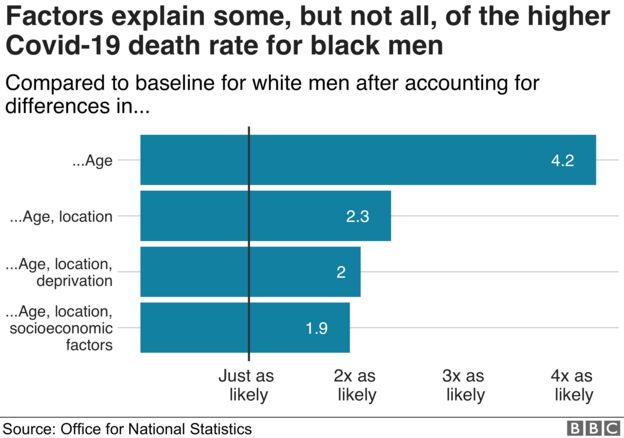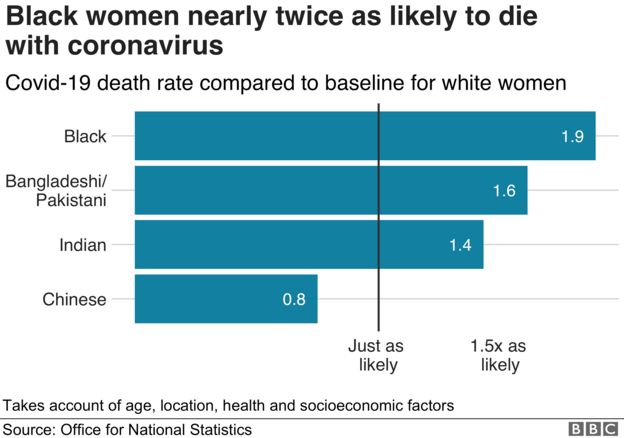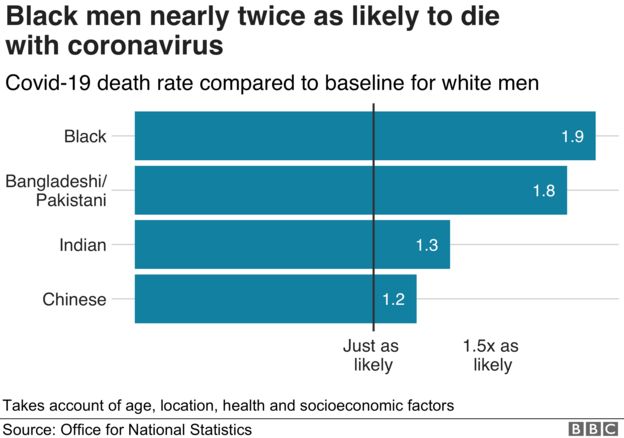Pyro as Bill said:
https://www.bbc.co.uk/news/uk-52574931 Co-morbidities (wealth related) and more public facing jobs (wealth related) are thought to be the biggest reasons for the 1.9 number but a lot of people are suggesting it still wouldn't be enough to get it down to 1. |
After reading that link I'm pretty confident it can be enough to get it down to 1
The ONS suggested some of the risk might be caused by other social and economic factors that are not included in the data. And it said that some ethnic groups may be "over-represented in public-facing occupations" and so more at risk of being infected while at work. The ONS plans to examine the link between coronavirus risk and occupation.
Not adjusted yet, taking some factors into account is not the same as adjusting for the different rate of spread in different neighborhoods.
Accounting for rough measures of health and wealth changes it a little, bringing the risk down to just under twice as likely. But the analysis doesn't address the impact of exposure at work or current health conditions. Helen Barnard, acting director of the Joseph Rowntree Foundation, said workers from black, Asian and minority ethnic backgrounds were also more likely to live in overcrowded homes, increasing the risk of the virus spreading to their families.
She said that the UK entered the crisis with "a rising tide of low pay, insecure jobs and spiralling living costs" and "we must ask ourselves what kind of society we want to live in after the virus passes". A Department of Health and Social Care spokeswoman said it had commissioned Public Health England to examine different factors such as ethnicity, obesity and geographical location that may influence the effect of the virus. "It is critical we find out which groups are most at risk so we can take the right steps to protect them and minimise their risk," she said.
They come the the right conclusion.
What matters is where is it spreading the most. Two factors are at play amplifying each other. The virus has a higher attack rate in lower income areas due to more crowded living conditions and more public-facing occupations fueling the spread, and lower income is generally linked to lower health/immunity making the effects worse.























 Essay Pro
Essay Pro